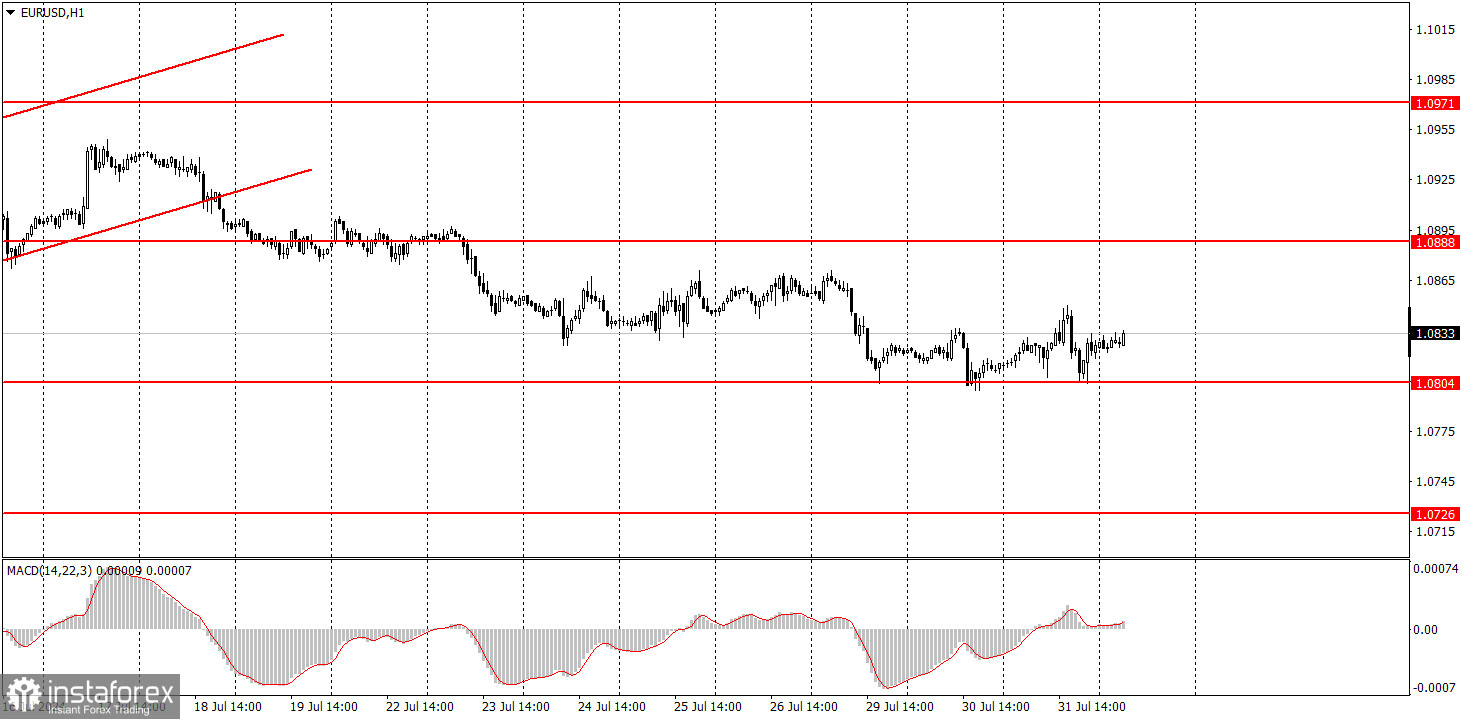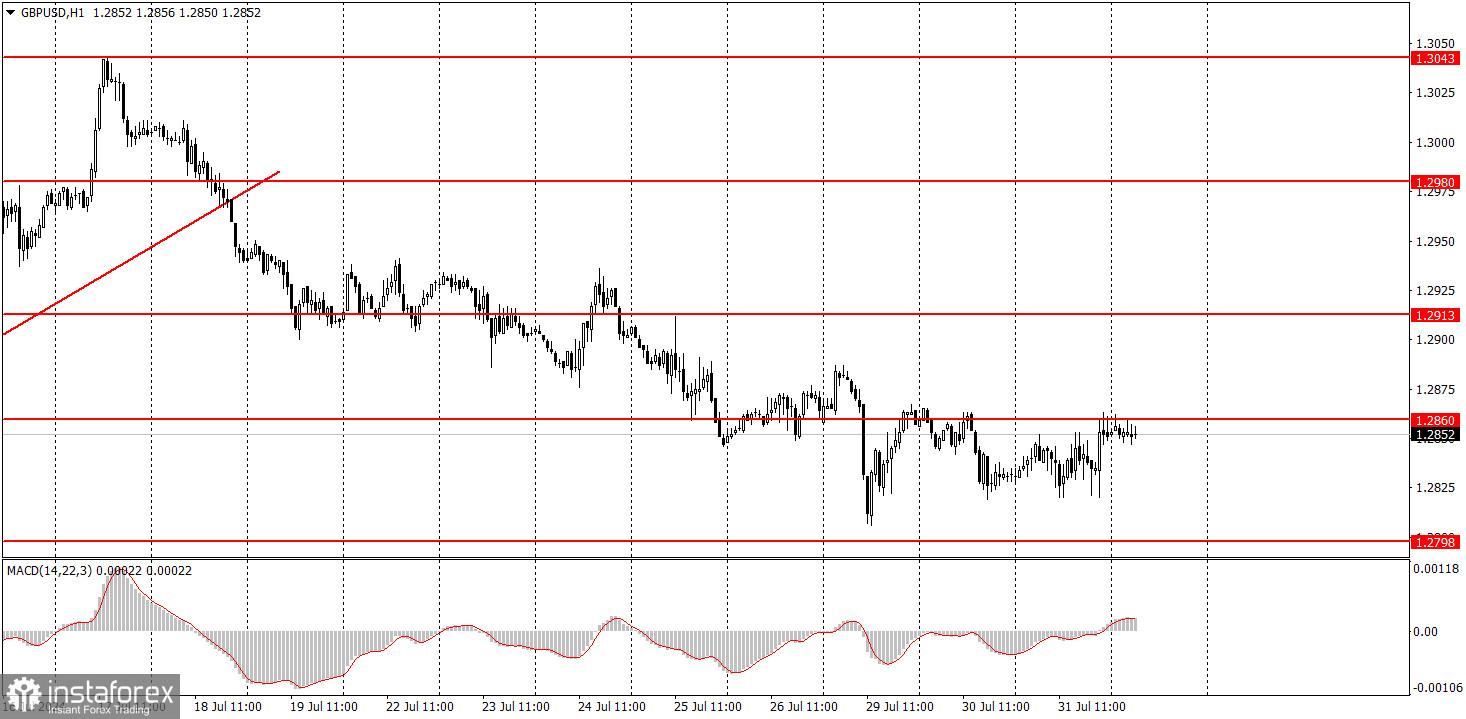Analysis of macroeconomic reports:

Only a few macroeconomic events are scheduled for Thursday, but does it matter how many there are if the market doesn't react to them anyway? This week, we have already seen the release of important reports on GDP for the Eurozone and Germany, inflation data for both regions and the ADP and JOLTs reports from the U.S. and the Federal Reserve meeting. These reports virtually did not impact the movement of the major currency pairs. Today, the market has a great opportunity to ignore the data on the Manufacturing PMI and unemployment in the Eurozone, as well as the U.S. S&P and ISM manufacturing business activity indexes.
Analysis of fundamental events:

Among the fundamental events for Thursday, the most notable are the Bank of England's meeting and BoE Governor Andrew Bailey's speech. Although the market continues to be on vacation, we expect that there will be some reaction to these events. If the BoE lowers the key rate, it will likely trigger the pound's selling. If the BoE refrains from easing monetary policy, the market will likely be disappointed, and the pound might rise. However, what kind of market reaction should we expect? Another 30-40 pips? Bailey's speech is also significant for the pound. He might give clues about how the central bank plans to act for the remainder of the year.
General conclusions:
There will be sufficient economic data again today, but the market could very well ignore it. The problem is that the market is not in the mood for active movements at the moment. Even if the BoE lowers the key rate, given the current circumstances, we might see a move of 50 pips, no more.
Basic rules of a trading system:
1) The strength of a signal is determined by the time it took for the signal to form (bounce or level breakthrough). The shorter the time required, the stronger the signal.
2) If two or more trades around a certain level are initiated based on false signals, subsequent signals from that level should be ignored.
3) In a flat market, any currency pair can produce multiple false signals or none at all. In any case, it's better to stop trading at the first signs of a flat market.
4) Trades should be opened between the start of the European session and mid-way through the U.S. session. All trades must be closed manually after this period.
5) In the hourly time frame, trades based on MACD signals are only advisable amidst substantial volatility and an established trend, confirmed either by a trendline or trend channel.
6) If two levels are too close to each other (from 5 to 20 pips), they should be considered as a support or resistance zone.
7) After moving 15 pips in the intended direction, the Stop Loss should be set to break-even.
What the charts show:
Support and Resistance price levels can serve as targets when buying or selling. You can place Take Profit levels near them.
Red lines represent channels or trend lines that depict the current trend and indicate the preferred trading direction.
The MACD (14,22,3) indicator, encompassing both the histogram and signal line, acts as an auxiliary tool and can also be used as a source of signals.
Important speeches and reports (always noted in the news calendar) can profoundly influence the price dynamics. Hence, trading during their release calls for heightened caution. It may be reasonable to exit the market to prevent abrupt price reversals against the prevailing trend.
Beginners should always remember that not every trade will yield profit. Establishing a clear strategy, coupled with effective money management, is key to long-term success in trading.





















